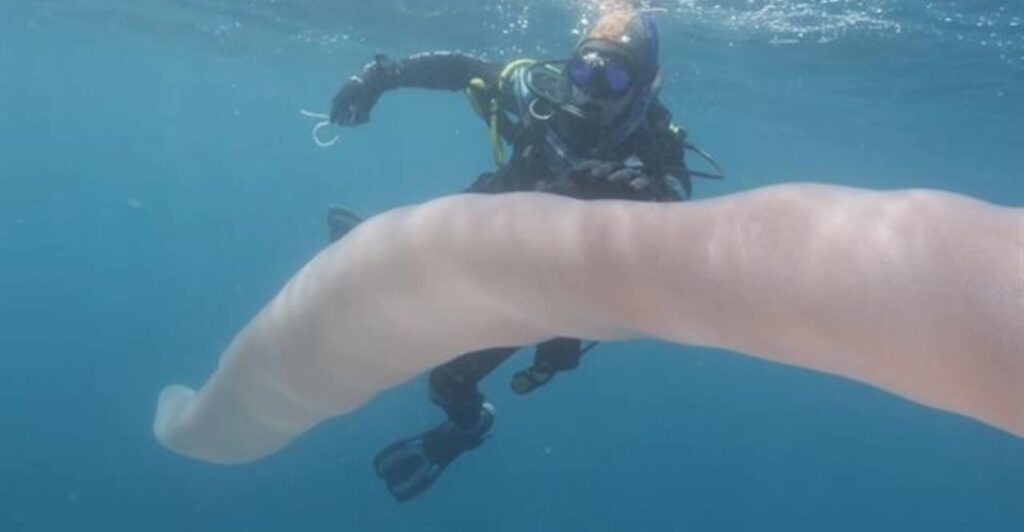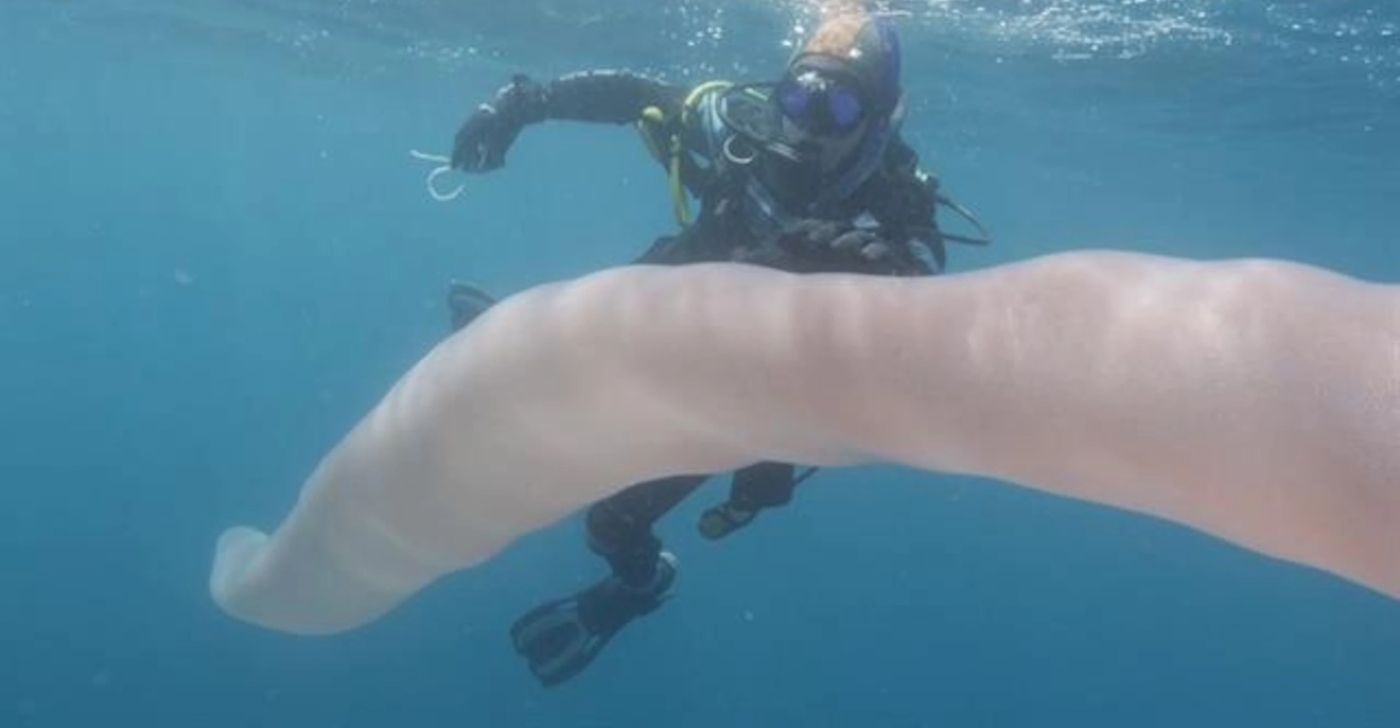
It turns out there are people in the world who, during a dive, choose to swim towards a 26-foot-long pink tube coming right for them. Thank goodness for that, because if there weren’t humanity wouldn’t have gotten the video below.
Videographer Steve Hathaway and his friend Andrew Buttle were diving off the coast of New Zealand in 2019 when they happened to cross paths with a pyrosome—a sometimes-giant, pink, translucent worm-like creature that was so big they could swim through it.
What would normally cause most people to get the heck out of the water was something the two men recognized immediately as totally harmless, and actually a rare spectacle.
Pyrosomes are free-flowing colonies known as tunicates, which consist of thousands of tiny creatures called zooids that come together to form a sort of frame.
Zooids filter feed by pumping water through their bodies and chowing down on plankton, poo, or detritus. This has earned them envious nicknames like “sea squirts” or “cockroaches of the sea.”
In total the divers spent 4 minutes swimming around it, an experience that “was pretty incredible,” Buttle reports to National Geographic. “We could see hundreds of thousands of tiny creatures right up close.”
MORE: Without This New Zealand Penguin Hospital, These Endangered Birds Would Be ‘Functionally Extinct’
These creatures and their cousin the salp are actually very common—it’s just that they’re normally a few centimeters long.
They feed by swimming vertically up to the ocean’s surface at night, and diving back down into the blackness when the sun comes up, a behavior theorized as a necessity for avoiding predation—as the ‘sea squirt’ has no defenses of any kind and is essentially a sort of all-you-can-eat buffet for a fish lucky enough to find one of that size.
One scientist told National Geographic such an event would be as if a human could simply hand on to the back of an elephant whilst eating it.
The marine creatures “reproduce” both sexually and asexually (they are also known for their bioluminescence, or ability to glow) but how they form their large colonies is not understood.
RELATED: Size Doesn’t Matter to a Dolphin Mom As She Adopts a Whale Calf
Hathaway, who spotted the translucent form off of Whakaari Island, 30 miles from the New Zealand coat, says the rich volcanic waters attract all kinds of sea life in summer, something that’s allowed him to have an 11-year career as a videographer filming animals like mantas and whales.
(WATCH the amazing video from National Geographic below.)
SWIM This Otherworldly Video Over to Pals on Social Media…




















